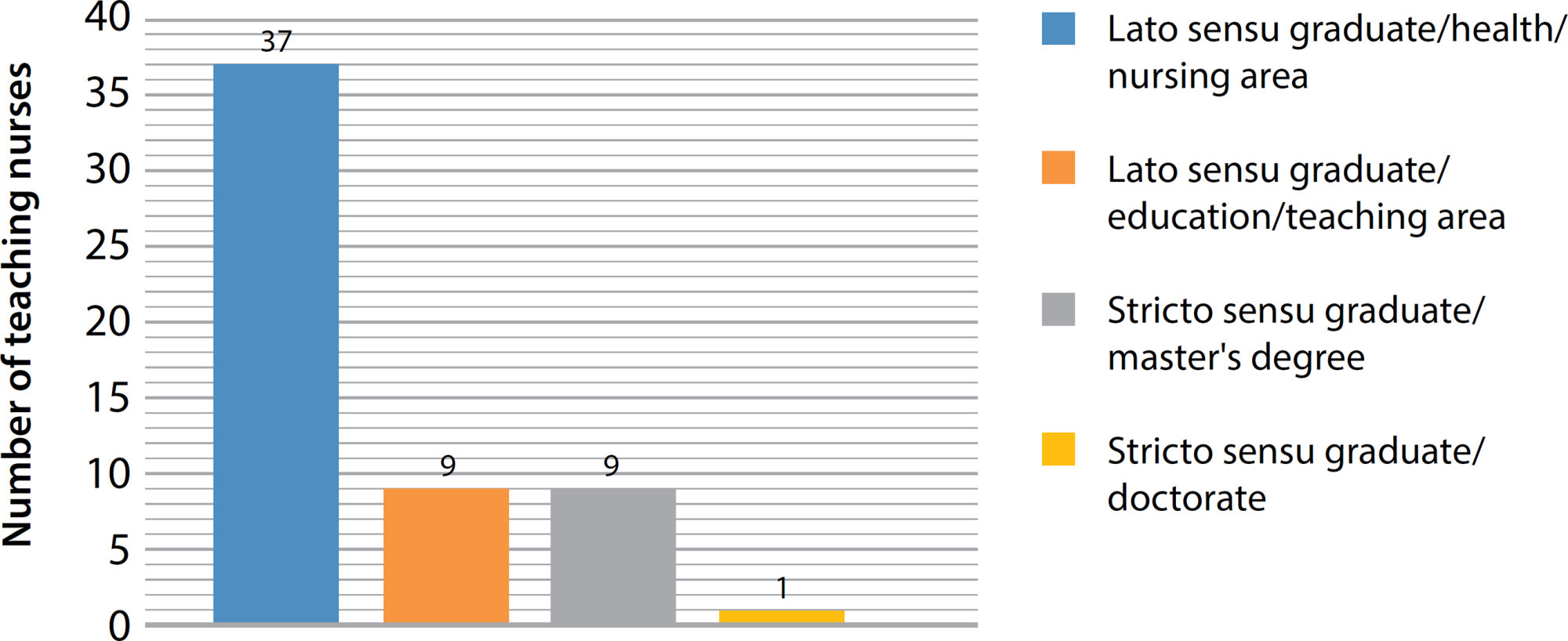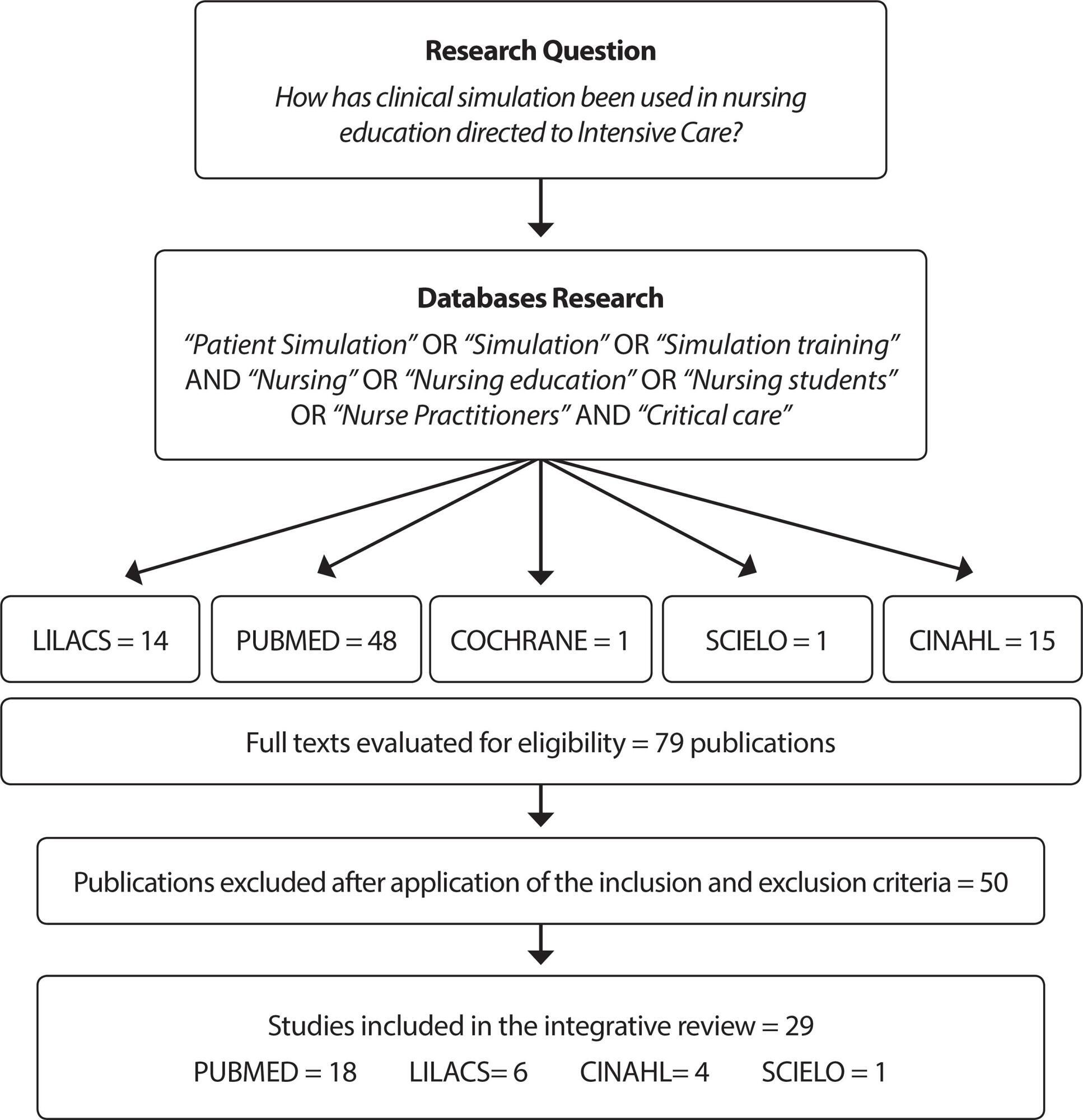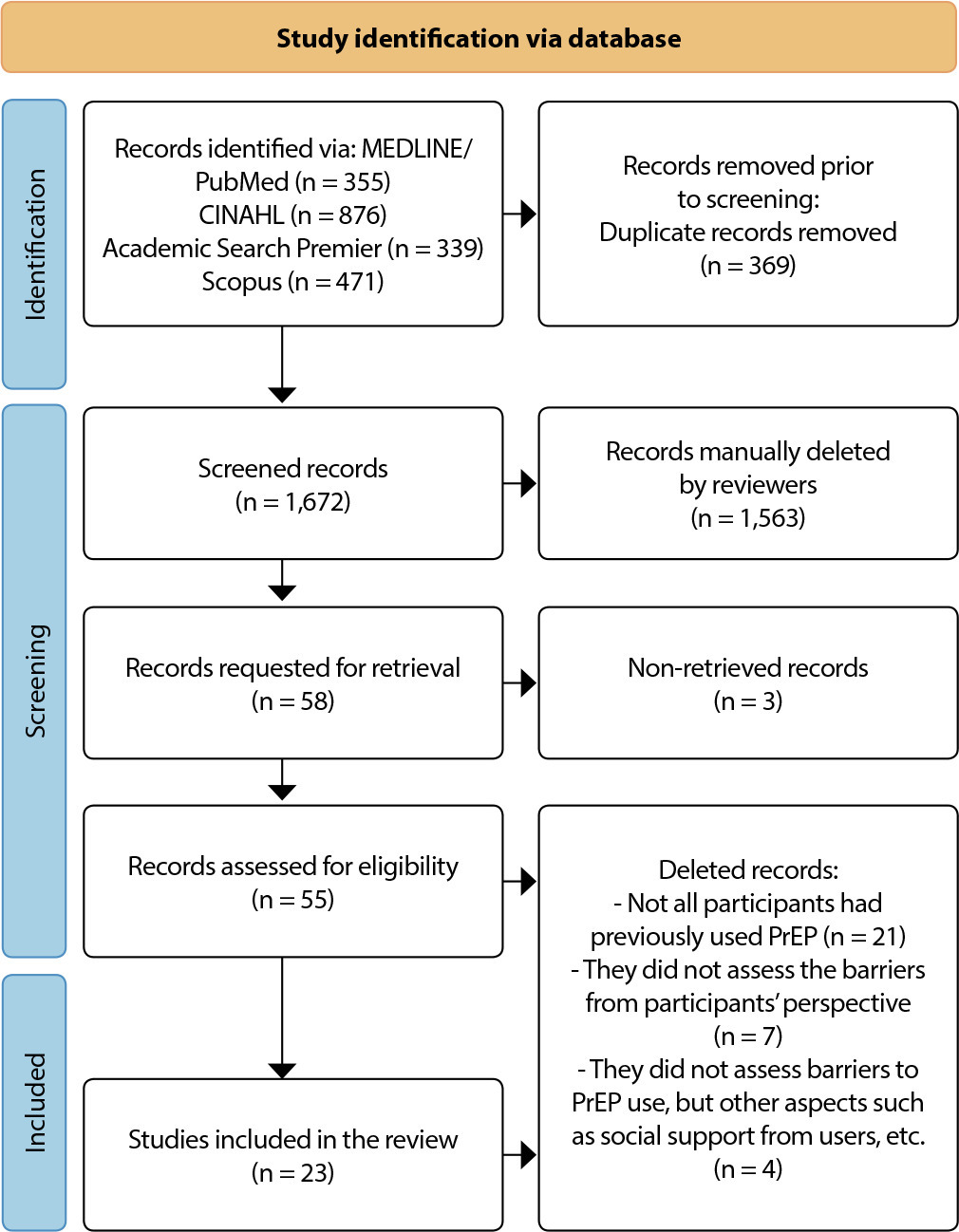-
ORIGINAL ARTICLE10-01-2022
Mental health assistance: identification of nursing diagnoses in a community mental health service
Revista Brasileira de Enfermagem. 2022;75(2):e20201175
Abstract
ORIGINAL ARTICLEMental health assistance: identification of nursing diagnoses in a community mental health service
Revista Brasileira de Enfermagem. 2022;75(2):e20201175
DOI 10.1590/0034-7167-2020-1175
Views0See moreABSTRACT
Objective:
to map and identify nursing diagnoses targeted at night care users in a Psychosocial Care Center according to NANDA-I Taxonomy.
Method:
this is a descriptive-exploratory study, of documentary research type of 319 records in medical records. It was held in a Psychosocial Care Center III in Goiás, from 2014-2018. Nursing diagnoses and records were extracted with non-standardized language.
Results:
813 records of nursing diagnoses identified in 53 different titles, in 10 domains, were identified. The most frequent diagnosis was risk for self-extermination. The domain with the highest number of diagnostic records was activity/rest. There was a predominance of diagnoses focused on the problem.
Final considerations:
mapping contributes to the planning of evidence-based nursing interventions and to the strengthening of professional identity in mental health. It is evident the need for practices that go beyond the symptoms in a preventive perspective, with a view to comprehensiveness.
-
ORIGINAL ARTICLE10-01-2022
Training-professional profile of nurses teaching at the Technical Schools of the Unified Health System
Revista Brasileira de Enfermagem. 2022;75(2):e20201142
Abstract
ORIGINAL ARTICLETraining-professional profile of nurses teaching at the Technical Schools of the Unified Health System
Revista Brasileira de Enfermagem. 2022;75(2):e20201142
DOI 10.1590/0034-7167-2020-1142
Views0See moreABSTRACT
Objective:
to describe the training-professional profile of nursing professors in the vocational course in nursing at the Technical Schools of the Unified Health System.
Methods:
a quantitative descriptive research, carried out with 61 nurses who are professors of technical courses in nursing at five technical schools in three Brazilian regions. Data were collected through an online questionnaire and submitted to descriptive analysis.
Results:
only 36% of teaching nurses were licensed and 80% had a specialization in nursing or health. Although 95.1% of participants considered training for teaching necessary, 44.2% did not have qualifications for this job. The average length of work in care was 8 years, focusing on the hospital network.
Conclusion:
the need for professor training and investment in it is evidenced, as the training of essential workers for nursing care and consolidation of the Unified Health System is on the agenda.

-
ORIGINAL ARTICLE10-01-2022
Continuing health education for qualification of professional practice in Psychosocial Care Centers
Revista Brasileira de Enfermagem. 2022;75(2):e20210155
Abstract
ORIGINAL ARTICLEContinuing health education for qualification of professional practice in Psychosocial Care Centers
Revista Brasileira de Enfermagem. 2022;75(2):e20210155
DOI 10.1590/0034-7167-2021-0155
Views0See moreABSTRACT
Objective:
to describe and analyze a strategy of continuing health education to manage the quality of professionals’ work in Psychosocial Care Centers.
Method:
this is a research-intervention carried out in Psychosocial Care Centers in the state of Goiás, Brazil, with the participation of 58 professionals. Data were collected in 2016 through seminars and workshops. Thematic content analysis was carried out.
Results:
professionals associated the Singular Therapeutic Project to the record of performed procedures and described the need to develop skills for correct completion and interpretation of procedures, use of a record software and computerization of processes. The qualification strategy used was considered to be effective in making improvements to the work carried out feasible.
Final Considerations:
the study presents a qualification strategy for community mental health service teams to guide the care model for territorial care centered on users.

-
ORIGINAL ARTICLE10-01-2022
Frailty in the elderly: screening possibilities in Primary Health Care
Revista Brasileira de Enfermagem. 2022;75(2):e20200973
Abstract
ORIGINAL ARTICLEFrailty in the elderly: screening possibilities in Primary Health Care
Revista Brasileira de Enfermagem. 2022;75(2):e20200973
DOI 10.1590/0034-7167-2020-0973
Views0See moreABSTRACT
Objectives:
to evaluate two instruments for screening frailty in the elderly in Primary Health Care.
Methods:
this is an observational, cross-sectional study, with a quantitative approach, with 396 elderly people. SPSS software helped to perform the statistical analyses. The study used the kappa coefficient and Spearman’s correlation.
Results:
the kappa coefficient between the Clinical-Functional Vulnerability Index 20 and the Edmonton Frailty Scale was 0.496, considered moderate. There was a positive and significant correlation (r = 0.77; p < 0.001) between the frailty conditions and the total score of the two instruments.
Conclusions:
when this article assessed fragility through the kappa coefficient, both instruments presented positive correlation and agreement. However, the identification of frailty was higher when it used the Edmonton Frailty Scale.
-
ORIGINAL ARTICLE10-01-2022
Factors associated with vulnerability and fragility in the elderly: a cross-sectional study
Revista Brasileira de Enfermagem. 2022;75(2):e20200399
Abstract
ORIGINAL ARTICLEFactors associated with vulnerability and fragility in the elderly: a cross-sectional study
Revista Brasileira de Enfermagem. 2022;75(2):e20200399
DOI 10.1590/0034-7167-2020-0399
Views0See moreABSTRACT
Objectives:
to assess factors associated with vulnerability and fragility in the elderly.
Methods:
crosssectional study with 384 elderly people in Fortaleza, Ceará. The Vulnerable Elders Survey and Clinical-Functional Vulnerability Index – 20 were used. Chi-square and Fisher’s exact tests were used for associations. In the analysis of the combined influence of risk factors, the stepwise logistic regression and multinomial regression methods were adopted.
Results:
251 (65.4%) non-vulnerable and 133 (34.6%) vulnerable elders. From the vulnerable elders analyzed, 42 (30.9%) are at high risk for frailty. Factors associated with vulnerability: age, gender, presence of comorbidities, hypertension, diabetes, osteoporosis and use of polypharmacy. There is a 30% increase in the chance of vulnerability for each additional drug. Physical activity reduces the chance of vulnerability by 60%. Factors associated with frailty: educational level; self-perception of health; comorbidities; polypharmacy.
Conclusions:
it is important to pay attention to the presence of arterial hypertension, osteoporosis, polypharmacy, and encourage the practice of physical activity.
-
10-01-2022
Sintomas musculoesqueléticos em cuidadores formais e informais de idosos
Revista Brasileira de Enfermagem. 2022;75(2):e20210249
Abstract
Sintomas musculoesqueléticos em cuidadores formais e informais de idosos
Revista Brasileira de Enfermagem. 2022;75(2):e20210249
DOI 10.1590/0034-7167-2021-0249
Views0See moreRESUMEN
Objetivo:
Evaluar los síntomas musculoesqueléticos en cuidadores formales e informales de los ancianos y verificar la asociación con factores personales y laborales. Métodos: Estudio transversal. Los instrumentos para la evaluación fueron el Cuestionario Internacional de Actividad Física (IPAQ), Self-Reporting Questionnaire-20, Escala de Percepción del Esfuerzo de Borg y el Cuestionario Nórdico de Síntomas Musculoesqueléticos.
Resultados:
Los cuidadores informales trabajaron más tiempo (60,2% vs. 41%), tuvieron más horas de trabajo (37,4% >12h por día), menos tiempo libre (85,4% vs. 2,5%) y falta de pautas de atención (90,2%). La región con más síntomas musculoesqueléticos fue la columna vertebral y, cuanto mayor la dependencia de los ancianos, mayores son las posibilidades de desarrollar síntomas musculoesqueléticos (OR= 1.3, 95% CI= 1.1-1.6, p <0.05).
Conclusión:
Factores personales y relacionados con el trabajo fueron más frecuentes en los cuidadores informales y la dependencia de los ancianos interfiere con el aumento de los síntomas musculoesqueléticos en cuidadores.
-
ORIGINAL ARTICLE10-01-2022
ICNP® terminology subset for the care of people with heart failure
Revista Brasileira de Enfermagem. 2022;75(2):e20210196
Abstract
ORIGINAL ARTICLEICNP® terminology subset for the care of people with heart failure
Revista Brasileira de Enfermagem. 2022;75(2):e20210196
DOI 10.1590/0034-7167-2021-0196
Views0See moreABSTRACT
Objective:
to develop an ICNP® terminology subset for the care of people with heart failure.
Methods:
this is a methodological study, which used the theoretical framework of the Mid-Range Nursing Theory for Cardiovascular Rehabilitation, with the steps: Construction of nursing diagnoses/outcomes and interventions statements and Cross-mapping of statements constructed.
Results:
forty-two diagnosis/outcome statements and 179 nursing intervention statements were constructed, organized based on five theory concepts, with a higher prevalence of statements related to “Rehabilitative care”, “Psychosocial support for patients and families” and “Supervised cardiovascular rehabilitation program”.
Final considerations:
it was possible to build nursing diagnosis/outcome and intervention statements for developing a terminology subset for the care of people with heart failure, based on the chosen theory.
-
10-01-2022
Kangaroo Method: potentialities, barriers and difficulties in humanized care for newborns in the Neonatal ICU
Revista Brasileira de Enfermagem. 2022;75(2):e20201121
Abstract
Kangaroo Method: potentialities, barriers and difficulties in humanized care for newborns in the Neonatal ICU
Revista Brasileira de Enfermagem. 2022;75(2):e20201121
DOI 10.1590/0034-7167-2020-1121
Views0See moreABSTRACT
Objective:
To identify the potentialities, barriers and difficulties for the implementation of humanized care from the perspective of the Kangaroo Method.
Methods:
Integrative literature review with a time cut from 02/01/2015 to 06/01/2019, totaling ten articles in the final sample.
Results:
The findings were categorized into two categories: Potentialities for humanized care from the perspective of the Kangaroo Method; Barriers or difficulties to the implementation of the Kangaroo Method. Several potentialities for humanized care allied to technology and continuing education were identified, as well as several barriers to the implementation of the Kangaroo Method, such as lack of physical space, lack of professionals and team training, lack of knowledge, lack of adherence and professional demotivation.
Final considerations:
There are still few studies that address the potentialities, barriers and difficulties for the implementation of humanized care from the perspective of the Kangaroo Method, and most of those included in this review were conducted in Brazil and present a qualitative approach.

-
ORIGINAL ARTICLE06-08-2020
Usability of a mobile application on diabetic foot self-care
Revista Brasileira de Enfermagem. 2020;73(4):e20180862
Abstract
ORIGINAL ARTICLEUsability of a mobile application on diabetic foot self-care
Revista Brasileira de Enfermagem. 2020;73(4):e20180862
DOI 10.1590/0034-7167-2018-0862
Views0See moreABSTRACT
Objectives:
to assess the usability of an app prototype for diabetic foot self-care by an end user.
Methods:
a descriptive study that uses heuristic assessment of a hybrid app usability. Fifteen users of an outpatient diabetes care service in a capital of Northeastern Brazil participated in the study during April 2018. The usability measurement tool called Smartphone Usability questionnaiRE was applied.
Results:
the lowest score was 77 and the highest was 112, with an average usability of 96.1 points. Usability was framed in the last two levels, 70 and 8o. Users now strongly agree (level 70) and fully (level 80) with the assessed items, which represents good usability of the apps prototype.
Conclusions:
the final product developed focuses on user needs and requirements, which can ensure usability based on effectiveness, efficiency and satisfaction triad.
-
08-19-2019
Clinical simulation in nursing education in intensive therapy: an integrative review
Revista Brasileira de Enfermagem. 2019;72(4):1061-1070
Abstract
Clinical simulation in nursing education in intensive therapy: an integrative review
Revista Brasileira de Enfermagem. 2019;72(4):1061-1070
DOI 10.1590/0034-7167-2018-0217
Views0See moreABSTRACT
Objective:
to analyze the publications on clinical simulation practices for education in Nursing in Intensive Care.
Method:
an integrative review carried out through LILACS, PubMed, Cochrane Library, CINAHL and SciELO databases, of articles published from 2008 to 2017.
Results:
29 articles were selected, of which 76% discuss the use of simulation in continuing education of nursing professionals, while the others describe their use for student education. There is a higher prevalence of studies with a level of evidence 6 (17), with 28 international publications. There was an increase in scientific production, with 16 articles published in the last three years.
Conclusion:
variables after simulation use, such as confidence, communication skills, efficiency in the identification of clinical worsening of patients, development of technical skills, teamwork and clinical decision-making, presented a significant improvement, demonstrating that this tool is effective in qualifying care for critical patients.

-
ORIGINAL ARTICLE09-16-2019
Social incentives for adherence to tuberculosis treatment
Revista Brasileira de Enfermagem. 2019;72(5):1182-1188
Abstract
ORIGINAL ARTICLESocial incentives for adherence to tuberculosis treatment
Revista Brasileira de Enfermagem. 2019;72(5):1182-1188
DOI 10.1590/0034-7167-2017-0654
Views0See moreABSTRACT
Objective:
To analyze the influence of social incentives for adherence to tuberculosis (TB) treatment.
Method:
Qualitative study, in which 26 primary health care professionals of São Paulo were interviewed in 2015.Their testimonies were submitted to the speech analysis technique. The theoretical reference was the social determination of the health-disease process. Ethical procedures were observed.
Results:
TB is related to precarious living conditions. Incentives such as the basic food basket and transportation stipends are relevant for patients’ adherence to treatment, as well as to the create bonds between the patient and the health team.
Final considerations:
The incentives strengthened adherence to TB treatment. However, interventions in the context of public measures must transcend the remedial dimension and be guided towards the transformation of the TB situation, which means supporting processes that modify living conditions.
-
REFLECTION05-03-2021
Florence Nightingale’s theory and her contributions to holistic critical thinking in nursing
Revista Brasileira de Enfermagem. 2021;74(2):e20200139
Abstract
REFLECTIONFlorence Nightingale’s theory and her contributions to holistic critical thinking in nursing
Revista Brasileira de Enfermagem. 2021;74(2):e20200139
DOI 10.1590/0034-7167-2020-0139
Views0See moreABSTRACT
Objective:
to reflect on Florence Nightingale’s legacy and describe her contributions to critical holistic thinking in nursing.
Methods:
this is a theoretical reflection, for which scientific productions on Florence Nightingale’s environmental theory, as published in national and international journals, were based.
Results:
Florence Nightingale’s philosophy and teachings emphasize that the nurse must use her brain, heart and hands to create healing environments to care for the patient’s body, mind and spirit. Nursing, since the time of Nightingale, has been building the holistic paradigm, in all schools of thought, with a view to a humanistic approach to the human being in their indivisible relationship with the environment.
Final considerations:
Florence’s contributions to holistic critical thinking in nursing are evident, constituting nurses’ differential in clinical practice.
-
ORIGINAL ARTICLE07-01-2020
Homeless population: characterization and contextualization by census research
Revista Brasileira de Enfermagem. 2020;73(5):e20190236
Abstract
ORIGINAL ARTICLEHomeless population: characterization and contextualization by census research
Revista Brasileira de Enfermagem. 2020;73(5):e20190236
DOI 10.1590/0034-7167-2019-0236
Views0See moreABSTRACT
Objectives:
to analyze characteristics of homeless people and factors associated with living on the streets.
Methods:
a census-type sectional survey carried out between 2015 and 2018, in the municipality of Maringá-Paraná. A total of 701 homeless answered a structured questionnaire with sociodemographic data, living conditions, and drug use. We used Pearson’s correlation test for the association analysis of the variables at a 95% confidence level.
Results:
men (90.7%) the average age of 37.7 years had been homeless for an average of 5.39 years. Most had little education (54.2%), and homelessness was due to drug use (47.2%) and family disagreements (38.9%).
Conclusions:
drug use and family disagreements were the main reasons for homelessness. Time on the street, gender, and drugs were associated with a negative correlation to be homeless; and age, mean daily income, the number of daily meals, having been in prison, and having an income source were associated with positive correlation.
-
ORIGINAL ARTICLE10-21-2019
Religious/spiritual coping and spiritual distress in people with cancer
Revista Brasileira de Enfermagem. 2019;72(6):1534-1540
Abstract
ORIGINAL ARTICLEReligious/spiritual coping and spiritual distress in people with cancer
Revista Brasileira de Enfermagem. 2019;72(6):1534-1540
DOI 10.1590/0034-7167-2018-0585
Views0See moreABSTRACT
Objective:
To investigate the relation between the presence of spiritual distress and use of RSC and sociodemographic, clinical and religious/spiritual variables in people with cancer.
Method:
Cross-sectional study conducted in an association for support to people with cancer. The data obtained with the tools were analyzed using the Spearman‘s correlation coefficient and the Mann-Whitney Test.
Results:
129 volunteers participated in the study, of which 57% showed moderate spiritual distress, 96% used medium and high positive religious/spiritual coping. Spiritual distress showed positive correlation with negative religious/spiritual coping (P<0.001) and inverse correlation with age (p 0.002). The use of positive religious coping was statistically significant in people who have religious practices (p 0.001).
Conclusão:
Spiritual distress is a phenomenon that is present in the lives of people with cancer and has significant relation with the use, in a negative manner, of religion/spirituality as a way of coping with the disease.
-
REVIEW06-26-2023
Barriers to Pre-Exposure Prophylaxis (PrEP) use for HIV: an integrative review
Revista Brasileira de Enfermagem. 2023;76(3):e20210963
Abstract
REVIEWBarriers to Pre-Exposure Prophylaxis (PrEP) use for HIV: an integrative review
Revista Brasileira de Enfermagem. 2023;76(3):e20210963
DOI 10.1590/0034-7167-2021-0963
Views0See moreABSTRACT
Objectives:
to identify and synthesize scientific evidence on the barriers and difficulties for Pre-exposure Prophylaxis (PrEP) use and compliance for HIV.
Methods:
an integrative literature review, using the MEDLINE/PubMed, Cumulative Index to Nursing and Allied Health Literature (CINAHL), Academic Search Premier and Scopus (Elsevier) databases.
Results:
all (100%) the articles included identified that PrEP users experience some type of structural barrier related to health services such as long distance from the units, suboptimal logistics for taking pills and professional resistance to prescribing PrEP. Furthermore, 63.21% identified social barriers, such as stigma about sexuality and HIV, in addition to individual barriers such as alcohol use, adverse effects, and concerns about long-term toxicity.
Conclusions:
the barriers to PrEP use are multifactorial. Effective interventions are needed to support PrEP users in accessing, complying with, and retaining health services.

-
EXPERIENCE REPORT10-26-2020
Brazilian Nursing Process Research Network contributions for assistance in the COVID-19 pandemic
Revista Brasileira de Enfermagem. 2020;73:e20200798
Abstract
EXPERIENCE REPORTBrazilian Nursing Process Research Network contributions for assistance in the COVID-19 pandemic
Revista Brasileira de Enfermagem. 2020;73:e20200798
DOI 10.1590/0034-7167-2020-0798
Views0See moreABSTRACT
Objective:
to describe the theoretical construction process of nursing process support documents in COVID-19 care scenarios.
Methods:
an experience report of the joint activity of the Brazilian Nursing Process Research Network (Rede de Pesquisa em Processo de Enfermagem) composed of Higher Education and Health Institution researchers in Brazil.
Results:
five instruments were organized collectively, involving the elements of nursing practice (nursing diagnoses, outcomes and interventions) in assistance for community; for patients (with suspected or mild, moderate, and critical COVID-19 and residents in Nursing Homes); for nursing workers’ health support, also subsidizing registration and documentation during the COVID-19 pandemic.
Final considerations:
valuing the phenomena manifested by families/communities, patients and health professionals is essential for early detection, intervention, and prevention of diseases.
Search
Search in:
Nuvem de Tags
Adolescente (85) Atenção Primária à Saúde (239) COVID-19 (91) Criança (91) Cuidados de Enfermagem (269) Educação em Enfermagem (151) Educação em Saúde (139) Enfermagem (930) Enfermagem Pediátrica (86) Estudantes de Enfermagem (77) Estudos de Validação (131) Família (87) Idoso (208) Promoção da Saúde (99) Qualidade de Vida (104) Saúde do Trabalhador (86) Saúde Mental (145) Saúde Pública (82) Segurança do Paciente (150) Tecnologia Educacional (100)



